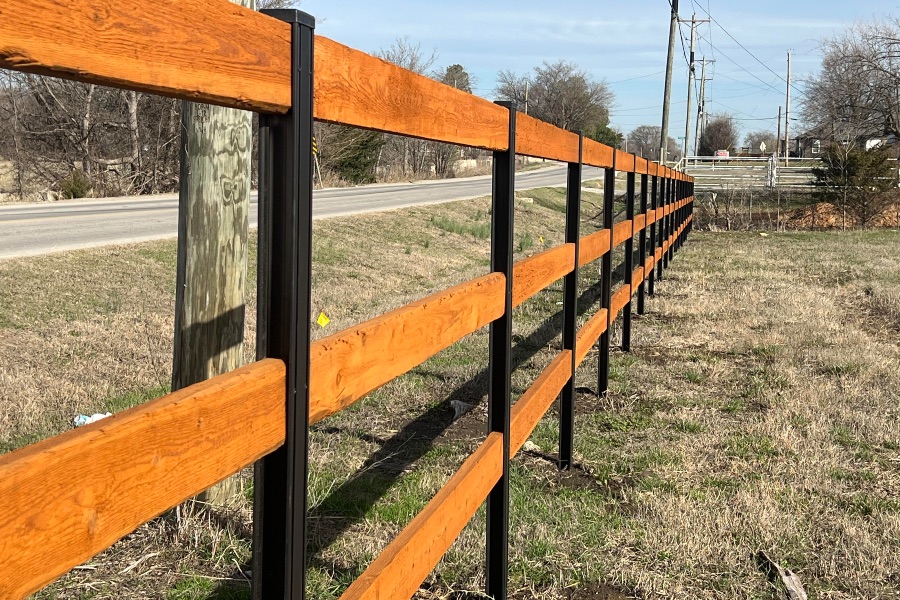All Categories
Featured

Your fence is a necessary component of your building, supplying protection, privacy, and aesthetic charm. There are several strategies you can implement to protect your fence and lengthen its life.
- Choose the Right Product. The initial step in shielding your fence from weather-related damages is to select the best product for your climate. Some products are much more immune to the components than others.
Wood Fences: While conventional wood fences use a natural, attractive look, they are specifically prone to water damage, rot, and insect invasion. If you select timber, select pressure-treated lumber or timber types that are a lot more resistant to dampness, such as cedar or redwood. Plastic Fencings: Vinyl is a low-maintenance alternative that stands up to fading, fracturing, and warping. It's also unsusceptible to rot and bugs, making it excellent for areas with high humidity or exposure to rain. Metal Fencings: Light weight aluminum and wrought iron fencings are sturdy and resistant to weathering. They can rust if subjected to moisture for prolonged durations. Select a powder-coated or galvanized steel fence to lower the risk of rust. Composite Fences: These are made from a blend of wood fibers and plastic, using the very best of both worlds-- toughness and a natural look. Compound fencings are resistant to dampness, fading, and decomposing, making them great for climates with regular rain or snow. 2. Apply Protective Coatings. Regardless of the product, using a protective covering can assist guard your fence from weather damages.

Wood Fencings: A good-quality stain or sealant can assist secure your timber fencing from wetness, UV rays, and pests. These coatings produce an obstacle that prevents water from permeating into the timber and causing rot. You must use a fresh layer of stain or sealer every pair of years, depending upon your environment and the degree of exposure to rain and sunshine. Vinyl Fencings: Although vinyl fences are normally immune to weathering, they can still deal with discoloration as a result of the sunlight's UV rays. You can use specialized plastic cleaners or UV protectants to maintain the color and look of your fence. Steel Fencings: For metal fences, take into consideration applying a rust-resistant guide and a coat of paint created for outside usage. Powder coating is another excellent choice for metal fencings, as it creates a durable, weather-resistant coating that stands up to corrosion and rust. 3. Routine Cleaning and Upkeep. Preserving your fence routinely is necessary to preventing damages from the aspects. Dirt, leaves, and other particles can develop on your fence, which can create discoloration, mold and mildew, and mold with time.
Wooden Fences: Clean your wood fencing every 6 months with a mild detergent option or a pressure washing machine (on a reduced setting) to remove dust and crud. Watch out for very early indications of rot, specifically at the base of the fencing articles where wetness has a tendency to build up. Vinyl Fencings: Plastic fencings are simple to clean with soap and water. If you notice mold or mold, utilize a combination of vinegar and water to delicately scrub the impacted areas. Stay clear of rough chemicals that could harm the surface. Steel Fences: On a regular basis tidy metal fences with a soft fabric or sponge to remove rust-causing debris. For wrought iron fencings, consider using a rust-inhibiting item to avoid deterioration. 4. Appropriate Installment and Positioning. Appropriate setup of your fencing can go a lengthy method in securing it from weather-related damages. Guarantee that your fencing is firmly secured and that articles are set deep sufficient into the ground to avoid shifting throughout heavy winds or tornados. If your fencing goes through hefty winds, installing supporting at bottom lines can provide added support.
In addition, think about the positioning of your fencing. If possible, plant shrubs or trees tactically around your fence to provide some natural defense from extreme winds, extreme sunshine, or driving rainfall. Nevertheless, beware not to plant as well close to the fencing, as origins can damage or move messages with time.
- Address Storm Damages Promptly. Tornados, especially those with high winds or hailstorm, can create prompt damages to your fencing. After a tornado, inspect your fence for broken areas, leaning messages, or fallen debris. Addressing damage swiftly can prevent further issues down the line. If you discover small damages, such as small splits or loosened up panels, repair them right away to stop water from seeping in and causing much more extensive damage.
- Winterize Your Fence. Cold temperatures and ice can be especially harming to wooden fencings. To prevent this, make certain that the base of your fencing blog posts is raised and not sitting in pooled water.
Conclusion. Weather-related damages is an unpreventable component of owning a fencing, but with the ideal safety measures and normal maintenance, you can dramatically prolong the life of your fencing. Select sturdy products fit for your environment, use safety layers, tidy regularly, and make certain appropriate installation. With these actions, you can secure your fence from the aspects and preserve its appearance and performance for several years to come.
Latest Posts
Very Little Effort, Maximum Sparkle: The Bath Fitter Advantage
Published Apr 21, 25
1 min read
Decorative Iron Fence: Sophistication and Stamina
Published Apr 21, 25
2 min read
Specials & Discounts: Unlock Discounts on Vehicle Maintenance at Montclare Auto Repair
Published Apr 21, 25
2 min read
More
Latest Posts
Very Little Effort, Maximum Sparkle: The Bath Fitter Advantage
Published Apr 21, 25
1 min read
Decorative Iron Fence: Sophistication and Stamina
Published Apr 21, 25
2 min read
Specials & Discounts: Unlock Discounts on Vehicle Maintenance at Montclare Auto Repair
Published Apr 21, 25
2 min read